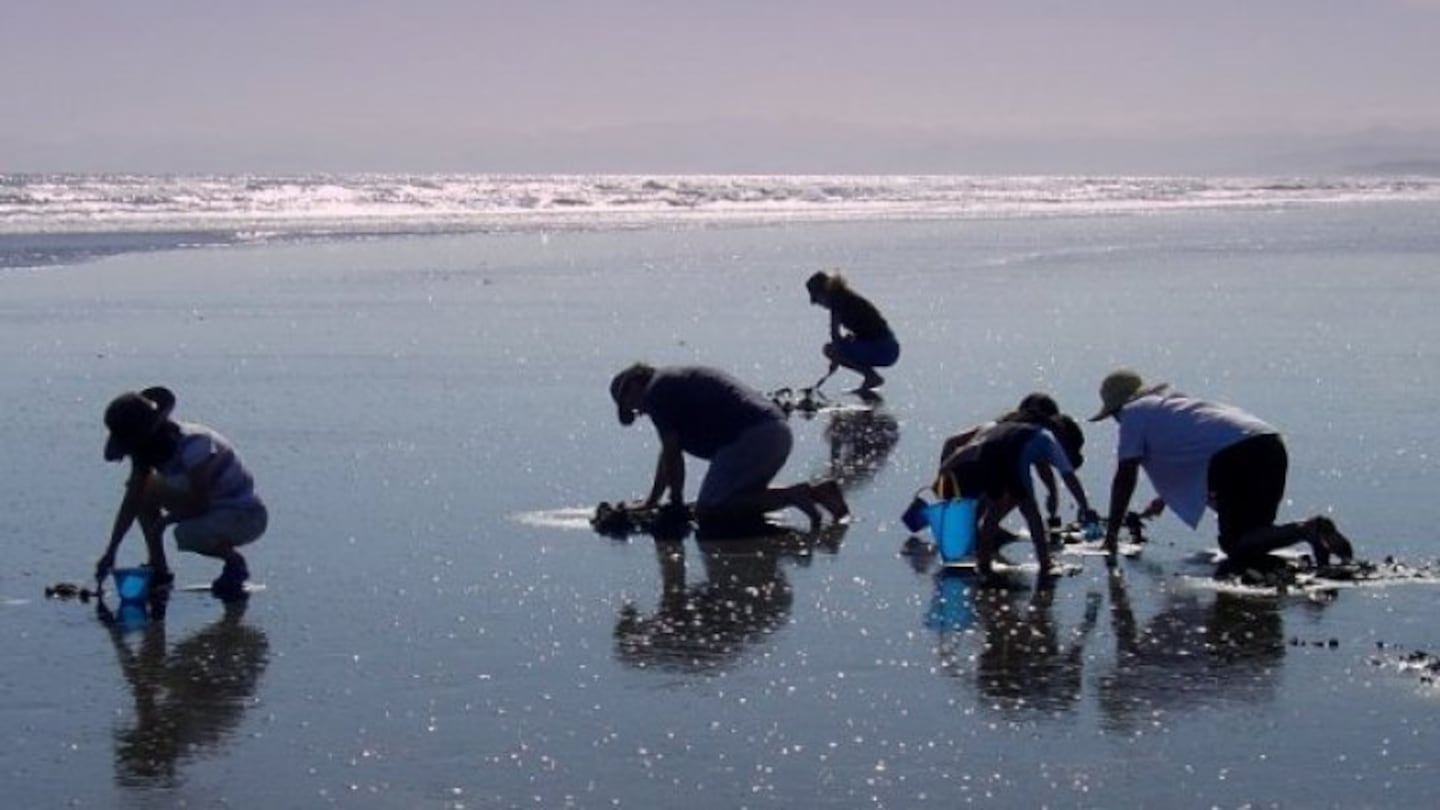Festival goers in Karangahake Gorge were not the only ones to experience an abundance of freshwater this past week. A bed of tuatua, known locally as pipi, located on the north end of Waihī Beach was also affected and Regional Council are investigating if this is what caused the large numbers to wash ashore.
Staff from the Bay of Plenty Regional Council and University of Waikato collected samples of the shellfish yesterday afternoon and will be analysing these for the presence of toxins. Samples have also been sent to the Ministry of Primary Industries to rule out any disease cause.
The Regional Council fund a Chair in Coastal Science role to provide additional science support for issues like this. Professor Chris Battershill, the current Chair in Coastal Science, said that it is likely a number of factors contributed to this shellfish die-off.
“Apart from the weather bomb that hit the area last week, higher ocean temperatures are being recorded in this area and there have been some large sea swells. It is also possible that this is a natural die-off due to stress from overcrowding as there is a very large population of shellfish densely packed just off the beach in this area”, he said.
“Although most of the shellfish appeared to be dead we did observe many live shellfish within the wave zone”, said Professor Battershill.
Regional Council expect to have some results back within 3-4 weeks.

